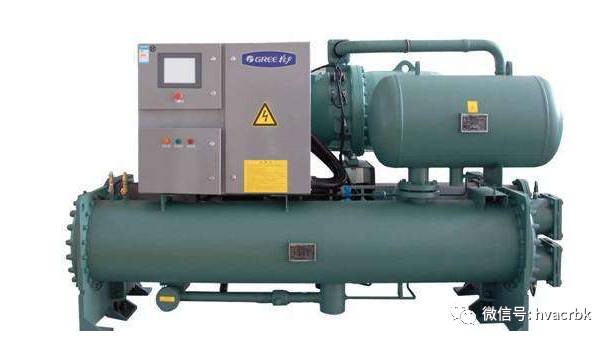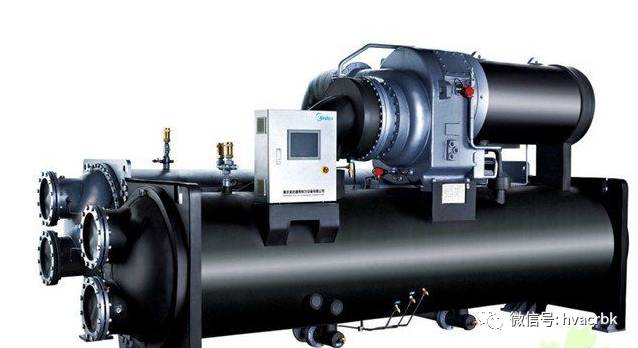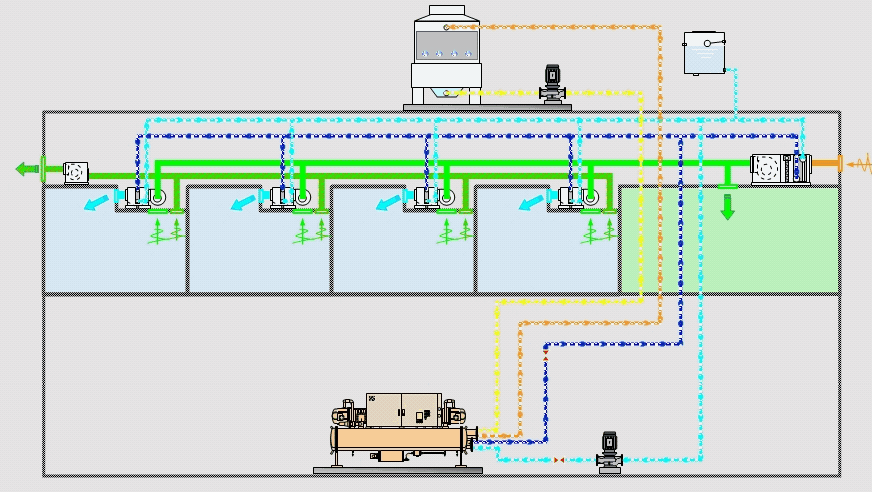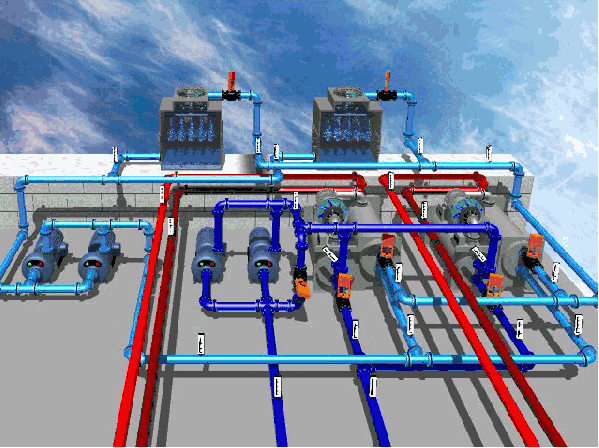News Center
- Analysis of operation parameters and working condition of water chiller
- date: 2020-04-01 hits:1355
1.Evaporation pressure and evaporation temperature, in the operation of chillers, evaporation temperature, evaporation pressure and cold water into the heat evaporator is closely related. When the heat load is large, the return water temperature of the cold water of the evaporator rises, which causes the temperature of the evaporator to rise and the corresponding evaporation pressure to rise. On the contrary, when the heat load is reduced, the return water temperature of cold water decreases, and its evaporation temperature and evaporation pressure both decrease. When the heat load of the air-conditioned room is reduced, the return water temperature of the cold water decreases, and the evaporation temperature and evaporation pressure are evenly distributed. According to the standard of JB / T3355 -- 1998, the rated working condition of chiller is 7 °C of chilled water outlet temperature and 30 °C of cooling water return temperature. The other corresponding parameters are the return water temperature of freezing water 12 °C, and the outlet water of cooling water 35°C.

2.According to the National Standard GB / T18403.1 -- 2001, the rated working conditions of chillers are chilled water inlet and outlet temperature 12 °C / 7 °C and cooling water inlet and outlet temperature 30 °C / 35 °C. Therefore, when the chiller leaves the factory, the working conditions are the inlet and outlet temperature of the chilled water 12 °C / 7 °C and the inlet and outlet temperature of the cooling water 30 °C / 35 °C. In operation, the temperature of cold water should be raised as much as possible when the requirement of air conditioning is met. In general, the evaporation temperature is 2 °C ~ 4 °C lower than the cold water outlet temperature. The evaporation temperature is usually controlled in the range of 3 °C ~ 5 °C. Too high evaporating temperature is difficult to achieve the required air conditioning effect, and too low evaporating temperature, not only increases the unit's energy consumption, but also easy to cause the evaporating pipeline freeze crack.

3.Condensation pressure and condensation temperature in a chiller, the pressure indicated by a high-pressure gauge is called condensation pressure, and the temperature corresponding to the pressure is called condensation temperature. The condensing temperature is of great importance to the power consumption of the unit under the condition of constant evaporating temperature. In addition, the increase of the condensing pressure of the centrifugal refrigeration unit will cause the surge of the main engine. On the contrary, the power consumption decreases with the reduction of condensation temperature. Therefore, in the operation of chillers, attention should be paid to ensure that the cooling water temperature, water quantity, water quality and other indicators in the eligible range. When the air is in the condenser, the temperature difference between the condensing temperature and the cooling water outlet increases, while the temperature difference between the cooling water inlet and outlet decreases. In addition, scaling and sludge on the water side of condenser tubes also play an important role in heat transfer. 3. Pressure and temperature of cold water chillers for air conditioning generally operate under the conditions of 12 °C of cold water return water temperature, 7 °C of water supply temperature and 5 °C of temperature difference stipulated in the standard working conditions. The cold water flow rate of the evaporator is inversely proportional to the temperature difference between supply and return water, that is, the larger the cold water flow rate, the smaller the temperature difference;. Therefore, the operating condition of the chiller sets the temperature difference between the cold water supply and return water as 5 °C, which in fact sets the cold water flow rate of the chiller. This control of the flow of cold water on the performance of the control of cold water through the evaporator too much pressure drop. The pressure drop of cold water supply and return water on the evaporator is set to 0.5 KGF / CM2 under standard operating conditions. The pressure drop adjustment method is to adjust the cold pump outlet valve opening, and evaporator supply, backwater valve opening.

4.The pressure and temperature of cooling water chillers run under standard operating conditions, the return water temperature of the condenser is 30 °C and the outlet temperature is 35 °C. For Water chillers in operation, environmental conditions, loads and refrigerating capacity have been established. At this point, the condensation heat load is no doubt constant. The standard stipulation enters, the water temperature difference is 5 °c, the cooling water flow must also be certain value. And the flow is inversely proportional to the difference in temperature between the incoming and outgoing water. Therefore, chillers in standard operating conditions, as long as the provision of cooling water into and out of the water temperature difference on the line. This flow is usually controlled by the pressure drop of cooling water in and out of the condenser. Under standard operating conditions, the outlet pressure drop of the condenser is set at about 0.75 KGF / CM2. Pressure drop adjustment method is also used to adjust the cooling water pump outlet valve opening and condenser inlet and outlet valve opening. In order to reduce the power consumption of water chiller, the condenser temperature should be as low as possible. It can take two measures: reducing the return water temperature of the condenser and increasing the cooling water. For Centrifugal chillers, too high or too low condensation pressure will cause surge. Centrifugal chillers encountered in this case, should pay attention to the condensation pressure and evaporation pressure difference can not be too small, should meet the need to prevent the occurrence of surge, otherwise there will be surge. In the autumn when the temperature is low, it is advantageous to run the reciprocating chillers because the condensing pressure is low and the power consumption is greatly reduced.

5.Compressor suction temperature the suction temperature of a compressor, for Reciprocating compressor, is the temperature of refrigerant gas in the Suction Chamber of the compressor; for Centrifugal compressors, it is the temperature of refrigerant gas on the Suction Guide vanes. The suction temperature not only affects the exhaust temperature, but also has an important impact on the volumetric refrigeration capacity of the compressor. When the compressor suction temperature is high, the exhaust temperature is high, the refrigerant is inhaled when the specific volume, when the compressor unit volume refrigeration capacity is small, this is what we do not want. In contrast, the compressor suction temperature is low, its unit volume refrigeration capacity is large. However, the compressor suction temperature is low, may result in refrigerant liquid was divided compressor suction, so that the Reciprocating compressor "liquid shock" . And for centrifugal compressor, because of too low suction temperature so that the compressor suction pressure is too low, may produce surge. Therefore, to provide for the compressor suction superheat. For reciprocating chillers, the compressor suction superheat for 5 ~ 10 °C, when the use of dry evaporator. The degree of superheat can be controlled by a thermal expansion valve, and the degree of superheat can be adjusted by adjusting the adjusting screw rod of the thermal expansion valve. 6. The exhaust temperature of the compressor is much higher than the condensing temperature, the direct influence factor of the exhaust temperature is the suction temperature of the compressor, the two are proportional. If the Reciprocating compressor suction, exhaust valve plate is not tight or broken leakage (internal leakage) , the exhaust temperature will rise significantly. In the centrifugal refrigeration unit, if the refrigeration system mixed with air, the suction temperature and exhaust temperature will increase. The middle pressure and temperature of the chiller is called the economizer, and the pressure inside the economizer is the middle pressure of the chiller, the refrigerant temperature is the intermediate temperature and the intermediate pressure is determined by the principle that the total power consumption of the low-pressure and high-pressure stage compressors of the two-stage centrifugal refrigeration compressor is as small as possible and the circulating refrigeration system is as large as possible. 8. Oil pressure difference, oil temperature and oil level high lubricating oil system is an indispensable part of the normal operation of the unit, which provides lubrication and cooling conditions for the moving parts of the unit. The oil pressure difference, oil temperature and oil pressure height are the three essential factors to ensure the lubrication and cooling of moving parts under normal working conditions. The ROLE OF OIL PRESSURE DIFFERENCE: is to make the oil in the oil pump drive, in the oil system pipeline flow, transport to the working parts to overcome its flow resistance. Oil Temperature: The oil temperature has an important influence on the viscosity of lubricating oil. Low Oil temperature will increase the oil viscosity, liquidity, not easy to form a uniform oil film, can not achieve the desired lubrication effect. Oil Level: The oil level is too low easy to cause the unit operation failure or damage accident. REFERENCE FOR CONTROL RANGE OF OIL PRESSURE DIFFERENCE: Reciprocating unit is 1.5 ~ 3.0 KGF / CM2; twin screw unit is 1.5 ~ 12.5 KGF / CM2; Centrifugal unit is 1.5 ~ 2.5 KGF / CM2. 9. Unit operating current and voltage the rated supply voltage required by general unit is 380V, three-phase, 50Hz, the average phase voltage instability rate is less than 2% . The operating voltage of all motors shall be within 5% of the voltage specified on the compressor nameplate.
Article Collation from the "encyclopedia of refrigeration"
cold and warm life, Binger accompanied-
pre:Air Conditioning maintenance d
next:Operating parameters of air co - back


